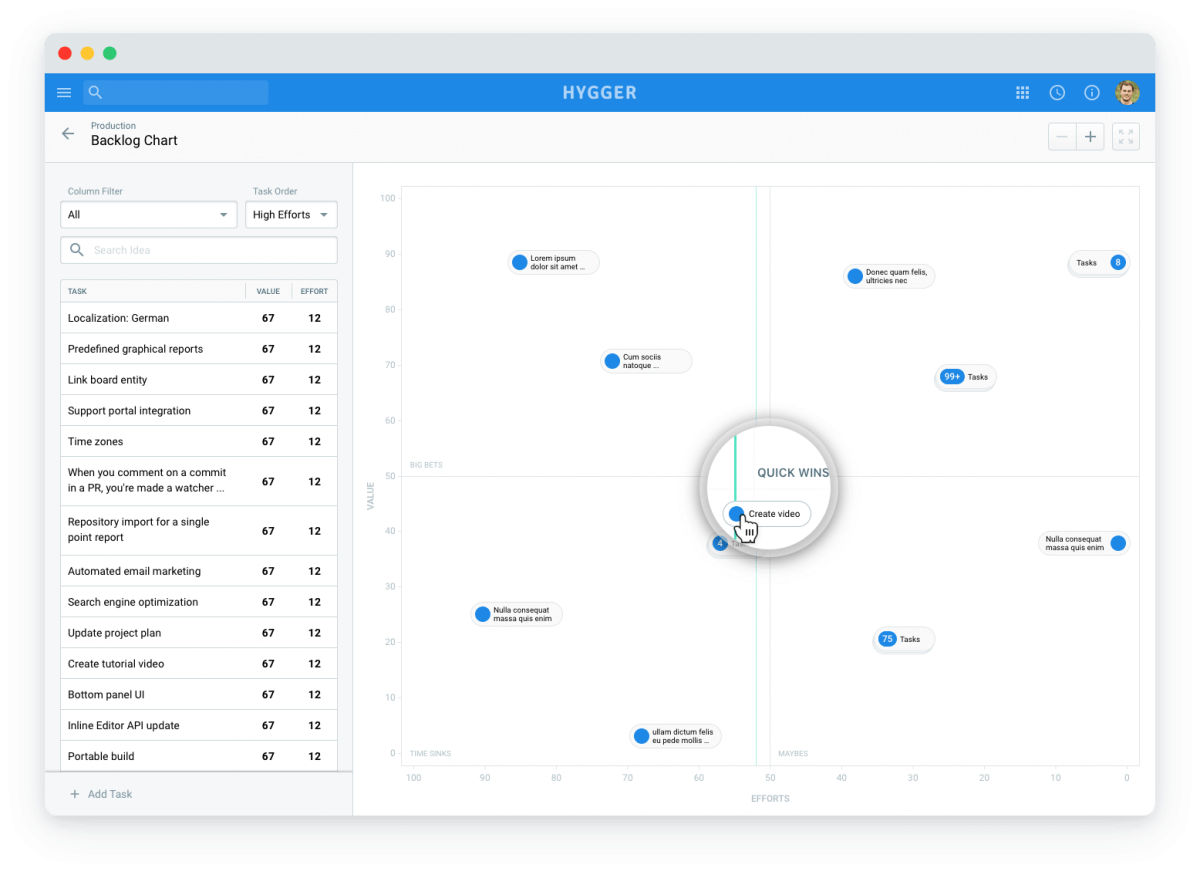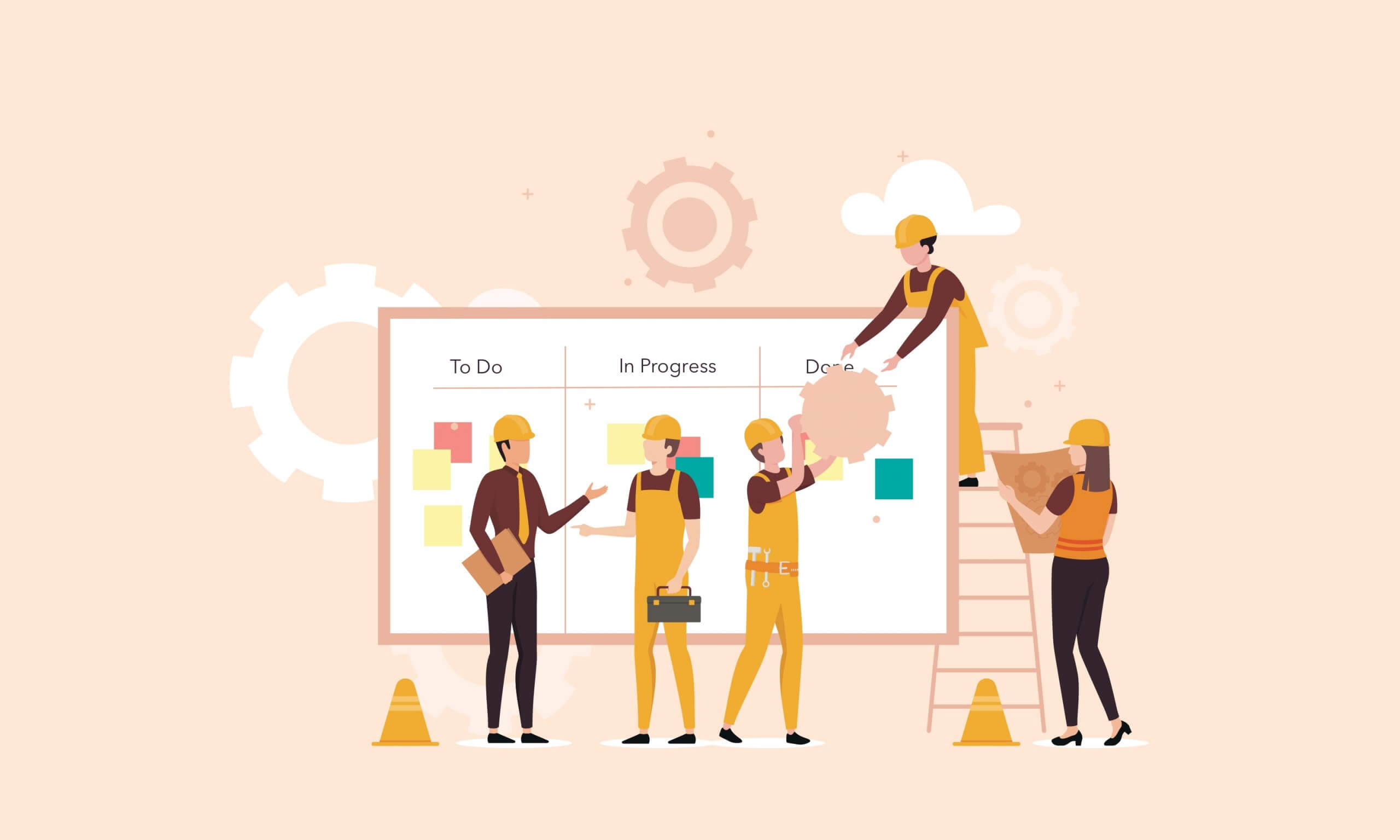Must-have or Time Wasting? 10 Rules of Efficient Brainstorming in IT companies

“Talent wins games but teamwork wins championships”. This is a quote from Michael Jordan and actually, he is right. Any successful decision, whether it is a victory in a championship or the release of a new product, is achieved through the efforts of the whole team. Where does the path to success begin?
*the article was originally published on DZone
Here we’ll define all advantages of the brainstorming process that can become the beginning of the great success of your company.
Brainstorming is an effective way of solving problems and current tasks, based on stimulating the creative activity of team members. The goal of brainstorming is to generate as many ideas as possible and determine the best solution based on them. Besides, brainstorming is one of the great solutions if the team members have such questions as “How to avoid routine in work processes?”
How often did your coolest projects start with a simple brainstorming session? Should we use brainstorming as a permanent practice in the team working life? In this article, we define what brainstorming is: a must-have process or time-wasting.
What is brainstorming in Agile teams?
In fact, Agile brainstorming focuses on the same common goals as any other brainstorming. There are differences in team members – the majority of participants in Agile brainstorm are developers.
Do not confuse brainstorming and a daily Stand Up.
A daily Stand Up is a meeting that takes place in teams like Kanban, Scrum, Extreme Programming or other teams to synchronize actions and discuss statuses on short-term tasks.
The Stand Up should not be turned into brainstorming because it has time constraints assigned by product managers or project managers (most often, 10-15 minutes).
Brainstorming in Agile teams is a thorough and detailed event with a specific goal to find a solution.
During the brainstorming session, all participants are invited to express as many options as possible to resolve the issue. As a result of the practice, several of the solutions most acceptable to the problem are selected.
How to arrange an effective brainstorming session? 10 rules
1)Be prepared. In an ideal world, the agenda of brainstorming should be announced in advance. In this case, the participants and team members will be able to prepare everything.
A moderator (a project manager or a product manager) chooses and notifies all participants, informs them about the place and time.
It is important for the moderator to understand who needs to be invited. It depends on the theme: a content manager is unlikely to be useful in technical development issues, and the CEO of the company does not need to discuss the concept of the site’s FAQ page. However, each case is individual and there can be exceptions everywhere.
Example 1: Brainstorming dedicated to the industry exhibition where a SaaS product participates. The goal is to design the booth concept and explore related product activities. For discussion, a marketing specialist, a PR specialist, a designer, a financing manager, a logistics specialist and a procurement specialist are invited.
Example 2: Brainstorming dedicated to the introduction of product’s Android application. The goal is to diversify the app and to create competitive features. A project manager invites developers, a designer, a beta tester and a support manager.
2) Present the issue correctly. A clear formulation is important to all team members. It is necessary to identify the problem without any additional clarifications.
3) Set the right goals. Often, the global results depend on the goal formulation. The more clearly initial data will be given to each participant, the more effective the brainstorm will be. There is no need to discover continents: set your goals according to SMART principle.
4) Generate ideas. In fact, this is the most important stage, in which, among dozens of options, real solutions to the problem are born. It should be a continuous stream of ideas, from the most trivial to the fantastic one. The more active participants in a brainstorming session, the more chances for successful ideas.
5) Download thoughts. Visualization is the first step in finding a solution to any problem. Fix your ideas on paper and you will quickly find additional ideas or you can build a chain from the abstract thoughts. Draw illustrations, graphics, use Kanban-boards with cards. All this will help to find the right way faster.
6) Only constructive criticism (but it is better without it at all). It is important to be able not only to listen but also to hear. Do not interrupt participants and give the opportunity to speak out to everyone. Even the craziest idea has a right to exist. Criticism during brainstorming can bring down the pace or even offend.
7) Evaluate, classify, and prioritize. After active brainstorming, the stage of evaluating and ranking ideas begins. It’s a high time to remember about prioritization techniques and, if possible, to apply an accessible tool for prioritization that will quickly help visualize the most important and secondary ideas.
Even if the tool for prioritization is designed for long-term plans and ideas, it can still be useful for the short-term assistance. For example, Backlog Priority Chart in Hygger.io includes the following criteria:
- Quick Wins – for the prime ideas.
- Big Bets – for ideas with high priority, but which can be executed later.
- Maybes – the ideas with less value and urgency, they can be postponed.
- Time sinks – the ideas of the most recent priority.
8) Ask for help. If the process of discussion has reached a deadlock or the votes of the participants have shared equally, do not hesitate to call “fresh” heads.
9) Moderate constantly. The brainstorming coordinator should not leave the process even for a minute. Some participants may be shy and not speak out on time. You need to track the timing, ask leading questions and give the voice to everyone.
10) Do not get distracted. Do not lose conclusions. It is very important to fix all the thoughts to have the opportunity later to return to them and to analyze something again.
Brainstorming can be held according to your rules, from timing to selection of participants, or can strictly follow the principles of one of the methodologies specially designed for successful discussion.
Popular techniques and practices for effective brainstorming
Stepladder technique
Stepladder is a simple method that stimulates the entry of team members into the decision-making group and demonstrates how they do it.
Decision making within a group may not go smoothly. There are always more active participants and those who prefer to remain silent if his /her position does not gain the necessary “weight”. Some people need a lot of time to fight for recognition within the team, and some gain credibility from the first minute. Because of this, the course of brainstorming can get out of control.
The technique was developed by Steven Rogelberg, Janet Barnes-Farrell and Charles Lowe in 1992. It motivates all team members to participate on an individual level, without undue influence. This leads to a wider variety of ideas. It does not force people to “close” and excludes the pressure from the more active members of the group.
The technique involves 5 stages
- All the participants learn the details about the problem to be discussed before the brainstorming. They need some time to form their own opinion on how to accomplish the task or solve the problem better.
- A group of two people is formed. They begin to discuss the problem among themselves.
- A third participant is added to the group. He /she presents own ideas to the first two participants before hearing their ideas that have already been discussed. After all three participants have presented their individual solutions and ideas, they discuss the possible options together.
- The process is repeated with the addition of a fourth person, and so on.
- The final decision is reached after all participants presented their ideas and discussed them with everyone.
The method is a systematic approach that involves all members of the group and allows everyone to be heard. Stepladder is recommended to shy, modest and calm people.
Delphi Method
This method is rather effective for everyday life and for professional solutions since it allows you to take into account the opinions of all people, by consistently combining proposals and conclusions. This is quite similar to Stepladder technology. However, this approach to brainstorming is different.
- According to the method, the coordinator controls the group. In Stepladder all participants are equal.
- Delphi method assumes the anonymity of group members. The moderator manages the flow of information, and participants may not know who else is participating, while in Stepladder meetings occur “face to face” approach.
- The method is also considered a more time-consuming process, requiring more people.
Participants are divided into two groups:
- Experts who present their views on the problem.
- Analysts who should bring expert opinions to the common conclusion.
The technique involves three stages:
- Preliminary, with the selection of experts (up to 20 people).
- Primary. At this stage, experts are studying the main question and “break it” to the smaller ones. Analysts select the most common questions and form a common questionnaire.
The questionnaire is returned to the experts. They have to tell if there is anything to add and if the information is enough. The experts need to offer their own solutions to the problem and explore alternative positions. They assess the effectiveness, availability of resources and the relevance of solutions. The analysts identify the main opinions and try to bring them closer. The steps are repeated until the experts come to a consensus.
- Analytical – agreeing with the opinions of experts, analyzing the results and final recommendations.
Round-Robin technique
Round-Robin is a brainstorming session with the principle of circular ideas creating.
This method lasts not as long as the previous ones. The more participants, the better results will be. This brainstorming is best conducted with a large round table.

Here’s how it works:
- There is a presenter who announces the problem to the audience.
- Each participant writes his own decision on a sheet of paper.
- The sheets with the entries are sent clockwise to the next one.
- Everyone should come up with his idea on the basis of the written idea and also write it down.
- The sheets are transferred and the rounds are repeated until each member of the team returns his sheet. As a result, each participant receives his own “bank of ideas”. Then the discussion begins.
The method of reverse brainstorming
Reverse Brainstorming is useful when more traditional techniques are no longer work. This is quite a radical way to raise the team’s activity and come to effective results from the opposite.
Reverse brainstorming is considered as a negative process. Instead of generating better ideas, participants are asked to offer impossible goals.
People who fond of the technology think that with the help of negative thoughts the group receives useful information about what does not work.
This method can be helpful when the team members are “burned out” or the company has reached ut “dead end”.
It is always easier to find negative than positive. Besides, negative emotions provoke to speak. Therefore, reverse brainstorming can turn into an exciting event within your team.
Rolestorming methodology
Rolestorming (role-playing brainstorming) may seem like a game or process, suitable only for creative teams. However, often, this technique allows you to go beyond the accepted and get completely new and fresh ideas by presenting the problem on behalf of another person.
You can generate ideas as Mark Zuckerberg, Steve Wozniak, Bill Gates or even the Pope. Each participant describes his/her character and presents the problem and possible solution from the point of view of the person described. All ideas are discussed in the group.
What technique should I choose?
You can understand which of the techniques is right for your team only by experiencing each of them. Testing the methods, you will find out that brainstorming is not a waste of time, but a productive event. The question “why” should give way to the question “how”.
Try them and share your experience!




